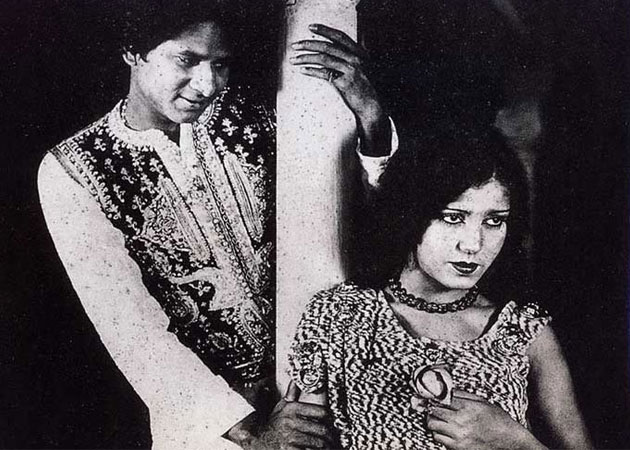
A still from India's first talkie film Alam Ara which released in 1931
Every decade of the 100 years of Hindi films had its unique highlights. A pictorial.
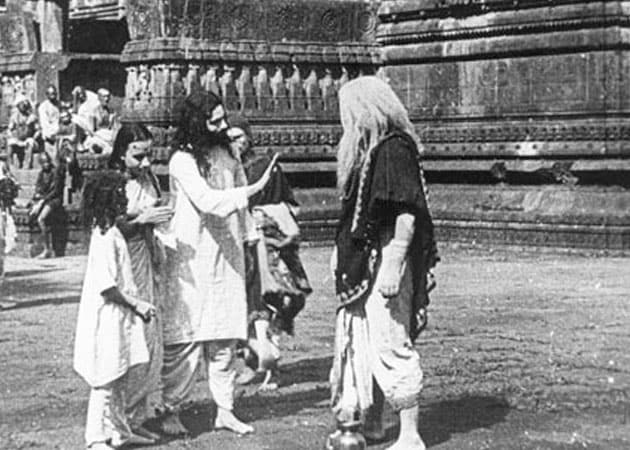
A still from the movie Raja Harishchandra
Phalke followed with other films like Mohini Bhasmasur (which also released in 1913) Satyavan Savitri (1914) and Lanka Dahan (1914). Interestingly, in 1912, N G Chitre and R G Torney had made the first silent film Pundalik. But as it was part produced by a British company, it is not considered the first in the history of Indian marquee.
1920s
Business as usual
In the 1920s, filmmaking became a regular industry. The first Indian love story Dhiren Ganguly's Bilat Ferat released in 1921. Kohinoor Studios of Bombay began the mythological path with Bhakt Vidur from the Mahabharat.
V Shantaram
The prominent filmmakers of this decade were V Shantaram, Ardershir Irani, Baburao Painter, Chandulal Shah and Suket Singh. Some of the films produced include Painter's Maya Bazaar (1923), Irani's Anarkali (1928) and Shantaram's Gopal Krishna. Fatima Begum who is considered as the first female filmmaker made Bulbul-e-Parastan in 1926. The first international co-production was with Italy for Nala Damayanti in 1921.
1930s
Let's talk The first talkie film Alam Ara released in 1931. It starred Prithviraj Kapoor, Master Vithal and Zubeida. The film was based on a play written by Joseph David and directed by Ardeshir Irani.
V Shantaram's 1936 film Amar Jytoi was the earliest film to tackle women's emancipation. The country's first dream girl Devika Rani began her career in the '30s. The other female leads were Durga Khote and Nadia. Homi Wadia and JBH Wadia were the pioneers of stunt movies with Hunterwali. Ashok Kumar, Prithviraj Kapoor, P C Barua and K L Saigal.
1940s
Going bold
Kismet, written and directed by Gyan Mukherjee, and produced by Bombay Talkies released in 1943. The film came with some bold themes for the first time in Indian cinema showing an anti-hero character and an unmarried girl getting pregnant.
Kismet
The movie also has the distinction of the first double-role (Ashok Kumar) played by any Indian actor. Interestingly, in 1947, the year of the country's independence over 100 Hindi films were released. Mehboob's Aurat (the original version of Mother India) was also released during this decade.
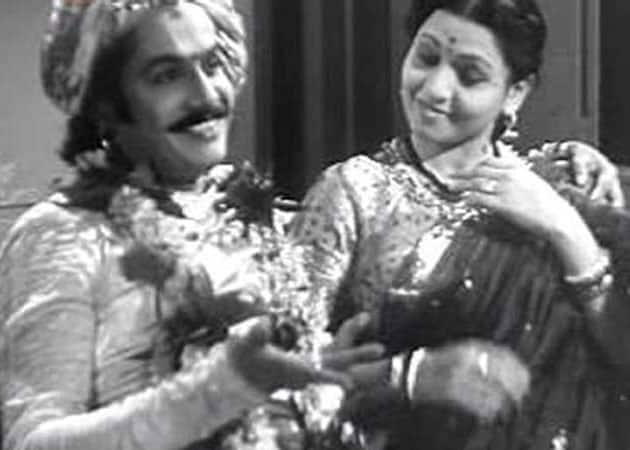
A still from the movie Kismet
1950s
Classic touch
Raj Kapoor's 1951 film Awaara is known for the chemistry between him and co-star Nargis. The film's dialogues, photography, songs and extraordinary dream sequence were its strength.
Awaara
It remains one of the most popular classics in Indian cinematic history of the '50s which was considered the golden age of Hindi filmdom with other classics like Mehboob Khan's Mother India and V Shantaram's Do Aankhen Barah Haath - both in 1957.
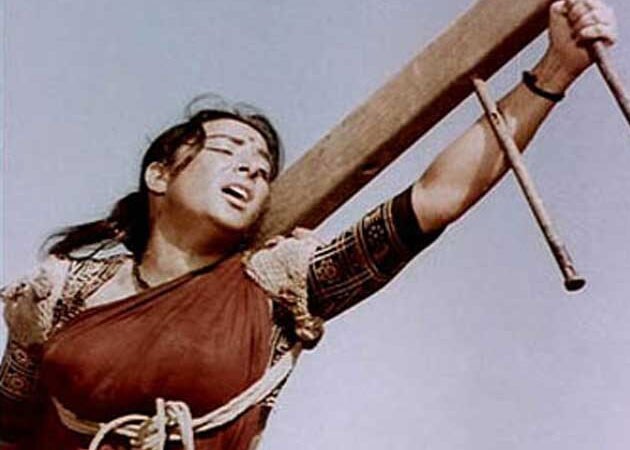
A still from the movie Mother India
1960s
Golden decade
The 1960s is considered the golden decade in the history of the Indian cinema.
Mughal-e-Azam
The film that highlighted this decade was Mughal-e-Azam which is considered the biggest Indian film ever made and took nearly a decade to make before its release in 1960. It also saw the rise of several stars like Dev Anand, Mala Sinha and Sharmila Tagore.
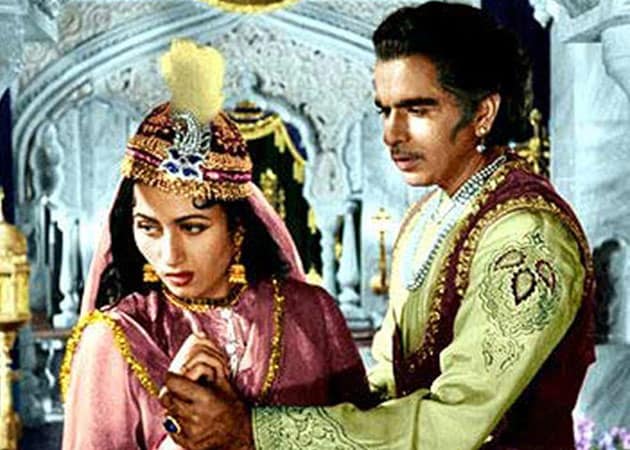
A still from the movie Mughal-e-Azam
1970s
The biggest of them all
Sholay was released on August 15 1975. Ramesh Sippy's film is considered the biggest Hindi films ever. It was the first Indian film to have a stereophonic soundtrack, and to be presented in the 70 mm widescreen format.
Rajesh Khanna and Amitabh Bachchan
The 1970s also marked the popularity of Amitabh Bachchan as the angry young man of cinema racing ahead of the superstar of the times - Rajesh Khanna.
1980s
Simply Sri
It was the decade when Sridevi ruled. Her 1986 film Naagin and 1989 film Chaalbaaz propelled her to the top position.
Her penchant for giggles and her ability to look distinctly tearful as well were enough to bring the masses to the movie-halls. Along with Madhuri Dixit who shone in Tezaab (1988) and Ram Lakhan (1989), they were considered the two biggest stars of the time.
1990s
King Khan arrives
It was marked by the arrival of Shah Rukh Khan. King Khan reign through the 1990s went by and large unchallenged.
His 1995 film Dilwale Dulhania Le Jayenge with Kajol is considered an all-time blockbuster and remains as the longest-running film in the history of Indian cinema.
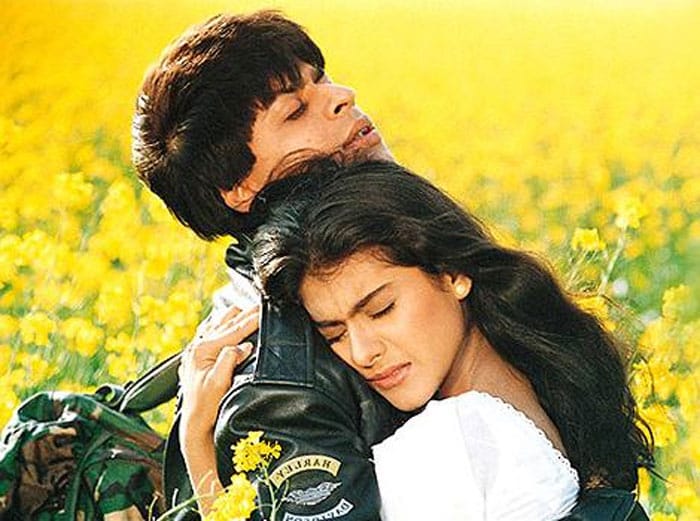
Shah Rukh Khan in a still from the movie Dilwale Dulhania Le Jayenge
<
2000s
Brush with the Oscars
With Aamir Khan's Lagaan making its way to the Oscars, the 2000s saw a growth in Bollywood's popularity in the world.
Lagaan
This led the nation's filmmaking to new heights in terms of quality, cinematography and innovative story lines as well as technical advances in areas such as special effects and animation.
2010s
It's magic
This decade, so far, belongs to Salman Khan. His 2010 film Dabangg raked in big money. It made the audience clap, whistle and dance in cinema halls to enjoy their outing. Sallu has followed it up with Ek Tha Tiger and Dabangg 2 last year. Clearly it will take a while for another star to reach his current top slot.

A still from the movie Raja Harishchandra
Phalke followed with other films like Mohini Bhasmasur (which also released in 1913) Satyavan Savitri (1914) and Lanka Dahan (1914). Interestingly, in 1912, N G Chitre and R G Torney had made the first silent film Pundalik. But as it was part produced by a British company, it is not considered the first in the history of Indian marquee.
1920s
Business as usual
In the 1920s, filmmaking became a regular industry. The first Indian love story Dhiren Ganguly's Bilat Ferat released in 1921. Kohinoor Studios of Bombay began the mythological path with Bhakt Vidur from the Mahabharat.
V Shantaram
The prominent filmmakers of this decade were V Shantaram, Ardershir Irani, Baburao Painter, Chandulal Shah and Suket Singh. Some of the films produced include Painter's Maya Bazaar (1923), Irani's Anarkali (1928) and Shantaram's Gopal Krishna. Fatima Begum who is considered as the first female filmmaker made Bulbul-e-Parastan in 1926. The first international co-production was with Italy for Nala Damayanti in 1921.
1930s
Let's talk The first talkie film Alam Ara released in 1931. It starred Prithviraj Kapoor, Master Vithal and Zubeida. The film was based on a play written by Joseph David and directed by Ardeshir Irani.
V Shantaram's 1936 film Amar Jytoi was the earliest film to tackle women's emancipation. The country's first dream girl Devika Rani began her career in the '30s. The other female leads were Durga Khote and Nadia. Homi Wadia and JBH Wadia were the pioneers of stunt movies with Hunterwali. Ashok Kumar, Prithviraj Kapoor, P C Barua and K L Saigal.
1940s
Going bold
Kismet, written and directed by Gyan Mukherjee, and produced by Bombay Talkies released in 1943. The film came with some bold themes for the first time in Indian cinema showing an anti-hero character and an unmarried girl getting pregnant.
Kismet
The movie also has the distinction of the first double-role (Ashok Kumar) played by any Indian actor. Interestingly, in 1947, the year of the country's independence over 100 Hindi films were released. Mehboob's Aurat (the original version of Mother India) was also released during this decade.

A still from the movie Kismet
1950s
Classic touch
Raj Kapoor's 1951 film Awaara is known for the chemistry between him and co-star Nargis. The film's dialogues, photography, songs and extraordinary dream sequence were its strength.
Awaara
It remains one of the most popular classics in Indian cinematic history of the '50s which was considered the golden age of Hindi filmdom with other classics like Mehboob Khan's Mother India and V Shantaram's Do Aankhen Barah Haath - both in 1957.

A still from the movie Mother India
1960s
Golden decade
The 1960s is considered the golden decade in the history of the Indian cinema.
Mughal-e-Azam
The film that highlighted this decade was Mughal-e-Azam which is considered the biggest Indian film ever made and took nearly a decade to make before its release in 1960. It also saw the rise of several stars like Dev Anand, Mala Sinha and Sharmila Tagore.

A still from the movie Mughal-e-Azam
1970s
The biggest of them all
Sholay was released on August 15 1975. Ramesh Sippy's film is considered the biggest Hindi films ever. It was the first Indian film to have a stereophonic soundtrack, and to be presented in the 70 mm widescreen format.
Rajesh Khanna and Amitabh Bachchan
The 1970s also marked the popularity of Amitabh Bachchan as the angry young man of cinema racing ahead of the superstar of the times - Rajesh Khanna.
1980s
Simply Sri
It was the decade when Sridevi ruled. Her 1986 film Naagin and 1989 film Chaalbaaz propelled her to the top position.
Her penchant for giggles and her ability to look distinctly tearful as well were enough to bring the masses to the movie-halls. Along with Madhuri Dixit who shone in Tezaab (1988) and Ram Lakhan (1989), they were considered the two biggest stars of the time.
1990s
King Khan arrives
It was marked by the arrival of Shah Rukh Khan. King Khan reign through the 1990s went by and large unchallenged.
His 1995 film Dilwale Dulhania Le Jayenge with Kajol is considered an all-time blockbuster and remains as the longest-running film in the history of Indian cinema.

Shah Rukh Khan in a still from the movie Dilwale Dulhania Le Jayenge
<
2000s
Brush with the Oscars
With Aamir Khan's Lagaan making its way to the Oscars, the 2000s saw a growth in Bollywood's popularity in the world.
Lagaan
This led the nation's filmmaking to new heights in terms of quality, cinematography and innovative story lines as well as technical advances in areas such as special effects and animation.
2010s
It's magic
This decade, so far, belongs to Salman Khan. His 2010 film Dabangg raked in big money. It made the audience clap, whistle and dance in cinema halls to enjoy their outing. Sallu has followed it up with Ek Tha Tiger and Dabangg 2 last year. Clearly it will take a while for another star to reach his current top slot.
The centenary celebrations suggest that Indian film production began in 1913, but that is far from the truth. "The history of Indian cinema before 1913 is a fragmentary one, but it is no less interesting for that," says Luke McKernan, moving image curator at the British Library. "It is still not fully understood, and too much overlooked." We can't watch these films today – in fact, estimates suggest that 99% of Indian silents are lost. But what we do know is that the history of Indian cinema has a little-known prequel.
Movies first came to Mumbai on 7 July 1896. The Lumière brothers sent a man named Marius Sestier to screen their short films to a mostly British audience at the swanky Watson hotel. Sen was not there – he would see the cinema two years later in Kolkata. But local photographer Harishchandra Sakharam Bhatavdekar (popularly known as Save Dada) was at one of those first Mumbai shows – and he was promptly moved to order a camera of his own from the UK.
Bhatavdekar's first movie, and the first by an Indian film-maker, was shot in 1899 – he captured a wrestling match in Mumbai's Hanging Gardens. The reel had to be shipped back to the UK for processing, but Bhatavdekar's career in the motion-picture business, and Indian film production itself, had begun. By the time The Wrestlers returned to Mumbai ready for exhibition, he had bought a projector and was screening foreign-made films. He supplemented his imports with the films he made himself. When maths scholar RP Paranjpe returned to India from Cambridge, Bhatavdekar captured the moment – and this may well be the first Indian news footage. Bhatavdekar continued to make films until the mid-1900s, when he made a sideways move and bought the Gaiety Theatre in Mumbai – which he ran successfully, and lucratively, until his death.
Sen's career ran in the opposite direction. When he began showing imported films in theatre intervals, the local paper raved: "This is a thousand times better than the live circuses performed by real persons. Moreover it is not very costly … Everybody should view this strange phenomenon." Soon he added his own titles, shooting play scenes, from The Flower of Persia to Ali Baba and the Forty Thieves. After 1904, he specialised in news footage, but as time went on, he found it harder to compete with imported films – eventually closing the business and selling all his equipment.
One of those competitors was Jamshedji Madan, a former theatre impresario whose Elphinstone Bioscope Company made, distributed and exhibited films. Madan made a lot of money out of the movies, acquiring the rights to show films from overseas studios, and in 1907 establishing India's first purpose-built cinema, the Elphinstone Picture Palace in Kolkata.
Reading this on mobile? Click here to watch.
Not just foreign films, but foreign film-makers came to India, shooting mostly documentary footage, which was then shown globally. McKernan picks out the British film director Charles Urban ("both a colonialist film-maker and one who saw beyond colonialism"), whose equipment was often used by native film-makers, and who sent cameramen to the region throughout the early film period. Some of the films he shot were lavish Kinemacolor numbers – notably With Our King and Queen Through India, a record of the royal visit to the 1911 Delhi durbar (celebrating King George V's coronation), which became an international box-office hit.
We know that all this film-making and film-watching was going on in the 1900s and 1910s, but if the movies are lost, what's the relevance? "It would be hard to explain how the Mumbai industry took off so fast in the 1920s without taking into account the 'cinema habit' of the previous two decades," says Kaushik Bhaumik, deputy director of the Cinefan film festival in Osian. "The imported films seen during this period provided Indians with a lot of experience of cinema that was crucial to the film production that followed." In fact, it was at a screening of an imported film that stage magician and photographer Dadasaheb Phalke had the Indian film industry's Eureka moment. Phalke was watching a lavish film based on the Christian bible: "While the life of Christ was rolling before my eyes I was mentally visualising the gods Shri Krishnu, Shri Ramchandra, their Gokul and Ayodhya," the "father of Indian cinema" later wrote. "Could we, the sons of India, ever be able to see Indian images on the screen?"
Raja Harishchandra, Phalke's 1913 film, is the result – and it's this that the centenary celebrates as the first Indian film. But in order to produce a story of Hindu gods with the same production values as a foreign movie, Phalke had to go far from home. First he travelled to London, to learn more (from both the English film director Cecil Hepworth and the editor of trade magazine the Bioscope) and buy equipment. On his return, he set up a studio in a borrowed bungalow and assembled a cast and crew. His first movie was less than epic in scale, a time-lapse movie of a pea-plant growing, but it was a useful experiment. Inspired by the films of the French conjuror-turned-director George Méliès, Phalke used camera trickery to animate his mythological feature debut: the stop-motion work he learned on the pea-plant film, in-camera editing and multiple exposures.
Raja Harishchandra premiered on 9 May 1913, and notwithstanding Dadsaheb Torne's stagebound 40-minutes Shree Pundalik from 1912, and the reels and reels shot by Sen, Bhatavdekar and peers, it was marketed as: "First film of Indian manufacture. Specially prepared at enormous cost … Sure to appeal to our Hindu patrons." The boisterous Marathi Phalke biopic Harishchandrachi Factory (2009) has the film-maker admonished by a relative: "We're under British rule, and he's playing with their toys" – but despite the foreign help and foreign influence, Raja Harishchandra was presented and largely accepted as home-made, Indian "swadeshi" fare – Phalke even perforated and printed the film himself. A century later, it is still regarded as the foundation of the national film industry. It's the "celebration of an idea, and of a certainty", according to McKernan, "like saying The Birth of a Nation was the first American film."
We know Raja Harishchandra wasn't the breakthrough moment it is claimed to be, but we may never know for certain who the true trailblazers of Indian cinema were, as records and newspaper reports are hard to come by: "The Anglo press of the colonial period could not have bothered recording the deeds of Indian film-makers tramping the countryside," says Bhaumik. "The vernacular press did not notice cinema because it was too preoccupied with politics." In fact, Bhaumik questions whether we would remember Sen and his lost films had he not been involved with filming the Durbars in 1903 and 1911 – events that were also covered by western film-makers. "I would be sceptical of bestowing Sen with any extraordinary status of pioneership."
Phalke, at least, was canny enough to build on his early success, producing popular films until the sound era. In 1917, the year that Sen's hoard of films went up in smoke, a director called Rustomji Dhotiwala shot a remake of Raja Harishchandra for Madan's Elphinstone Bioscope company. Many historians believe that this is the version that survives, rather than Phalke's – so searching for India's first movie may very well be chasing a ghost.
No comments:
Post a Comment